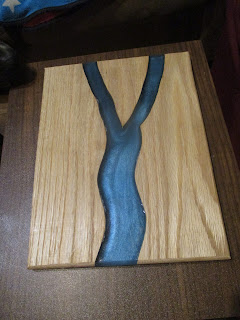Like libraries? Yeah, we all like libraries. All of us who would read this, anyway. A good old-school library with old books and wood and plush leather furniture, like the private library at the Biltmore estate, the Morrison reading room at UC Berkeley, or Zatanna's libraryat Shadowcrest.
So last month, I built
a Star Wars-themed book nook. Much fun, looks nifty on the shelf, but a bit wide and clumsily constructed in places. I learn a bunch and set out on another project. This one was far more complicated, but I think better thought out.
The library is made from three identically structured bays, boxes about three by four by nine inches cut on the CNC machine, with arch-shaped cutouts on two facing long sides, box-joint edges, and a few holes here and there for various reasons.
The platforms for the "balconies" are CNC'd as well, but most of the rest of the furnishings are are 3d printed. The bookshelves are from
a modular bookshelf design on Thingiverse. I flipped a few of the shelf designs horizontally, so the arrangements of volumes are even more different than in the original design, and every single spine and scroll is individually painted.
And there were a few other printed bits: the spiral staircase, the railings, the fireplace, and the table. The floors are images of Persian rugs printed on matte photo paper.
After assembling each bay, I ran a long string of LED lights behind the walls, poking bulbs through pre-drilled holes.
I had hoped to make an infinite library, but that didn't work out.
I've done infinity mirrors before,
and the principle is simple: mirror in back, semi-mirrored window film
in front, lights in between. The problem is that you need a
lot of
light, and I wasn't generating enough. Still, putting a mirror in the back makes it look twice as deep as it actually is, which isn't bad.
The hardest part is, of course, finding enough room on the shelves to put it.
Now all I need to do is find this much
real shelf space.





















